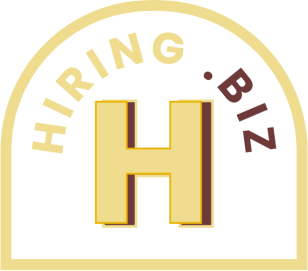
How to make the perfect hire in 13 simple steps
1. Do your research
Prepare to recruit by looking at similar job descriptions and scanning resumes of qualified candidates to understand what skills and experience are required for roles like yours. Monitor job trends in your area and industry to identify the most popular job titles and keywords job candidates are searching for, and compare salaries to determine the right compensation level for your role. To help lay the groundwork for writing a competitive job posting, come up with a list of the key job duties your new employee will be responsible for and think about the characteristics your ideal candidate will have.
2. Choose a highly-clickable job title
Post a free job on Indeed using a clear, concise job title that will rank high in search results and attract qualified candidates¹. Avoid buzzwords like “wizard,”“rockstar,” or “ninja,” since candidates are not likely to search for a job using those terms. Instead, pick a standard job title that job seekers are searching for. For example, a descriptive title like “Full Stack Software Developer“ will appear in more search results than “Software Guru” or “Full Stack Wizard.”
Pro-tip: Job titles with 80 characters or less receive more clicks on Indeed.
3. Create a standout job description
To compete with bigger companies, follow best practices for clear, meaningful job descriptions. Think about what your ideal candidate is likely to search for, and inject these popular keywords into your description for maximum visibility. Include accurate descriptions of the job’s responsibilities, requirements and rewards to encourage the right candidates to apply, and keep the tone conversational, informational and friendly. Check out our job description examples to help you create your own compelling job posting.
Pro-tip: Consider posting a Sponsored Job for better visibility, and immediate access to quality candidates you can invite to apply.
4. Review applicant resumes
When you have several applicants rolling in, it’s time to start narrowing down your candidate pool based on their resumes. Filter out applicants who don’t match the key job requirements by sending them a rejection email (Indeed has a built-in rejection message you can send with the click of a button!). To determine which resumes should be added to your “yes” or “maybe” piles, look for the following clues that tell a story about the candidate’s motivations, experience and work style:
- Quantitative evidence of a candidate’s past achievements
- Longevity at past roles although “job-hopping” may be common depending on the industry
- Clear career progression
- Attention to detail (is the resume riddled with grammar and spelling mistakes?)
- Skills and experience that are tailored to the job description
After reviewing resumes, communicate with your top candidates to learn more about their qualifications. This will help you create a short list of the best candidates and decide who should move forward in the hiring process. You can send emails to learn more about your candidates’ experience, or start scheduling phone screens and interviews.
5. Interview your top candidates
When interviewing candidates, start with a quick 15 to 30-minute phone screen to find out if they meet the basic job description and to determine if there is a mutual fit. Then, invite at least three of your most promising candidates to an in-person interview. Ask strategic questions that reveal their skills and qualifications, important personality traits and level of enthusiasm for the role and company..
The Equal Employment Opportunity Commission’s best practices for employers details how to prevent discrimination in the interview process by avoiding certain topics, like age, race, marital status, etc. Here are some general questions that are appropriate to ask for any position:
- Tell me about yourself.
- Why are you interested in this position/company?
- What are your strengths/weaknesses?
- What professional achievement are you most proud of?
- Describe your ideal work environment.
For help tailoring your questions to the position you’re hiring for, explore our list of interview question examples, along with job and industry specific questions you can ask to find the right hire for your business.
Pro-tip: Take notes immediately after each interview so you’ll remember the strengths and weaknesses of each candidate more clearly when it’s time to make your final hiring decision.
6. Check references
Checking references is a great way to gain additional insights, verify skills and ensure that you’re hiring employees who are being honest about their work experience and qualifications. Request at least three references from your top candidates and give them a quick call.
Consider asking your candidate’s references three to five of the following questions:
- Can you confirm the candidate’s job title, responsibilities, start and end dates, etc.?
- How long have you known/worked with the candidate?
- Tell me about what it’s like to work with the candidate.
- Why did they leave the position?
- What are their biggest strengths and weaknesses?
7. Keep your recruitment efforts organized
When you’re hiring for multiple roles or have dozens of applicants applying for a single position at your company, things can get overwhelming quickly. Organize your recruitment efforts and keep track of interesting candidates as they move through your hiring process by using candidate statuses (New, Reviewed, Phone Screened, Rejected, etc.) and maintaining accurate, detailed notes of each of your candidate’s strengths and weaknesses.
8. Choose your perfect candidate
When you have multiple candidates that you think would be a great fit, choosing the right person can be difficult. To make a decision, reflect on what you learned about your candidates’ skills, personality and experience from their resumes, interviews and references. Consider how your candidates will add to your team and company culture, and compare notes with anyone else who was involved in the hiring process. It’s important to think about what your business needs and choose the candidate who will help you achieve your goals.
9. Make an offer of employment
When you’ve selected your top candidate, it’s time to extend a job offer. Before sending the official offer letter, email the candidate to set up a time to talk over the phone. During the call, express excitement about inviting them to join your team and present the terms of your offer, including salary, benefits, start date, etc. If the candidate accepts your verbal offer, send an official written letter. Your offer letter should cover everything you talked about during the phone call.
Check out our resources for writing an engaging, informative job offer letter:
Important: Consider having a legal professional review your offer letter before sending it out.
10. Notify rejected candidates as soon as possible
According to a 2019 Indeed survey, 77% of candidates would have a negative perception of a company if they didn’t hear back after applying.² To avoid burning bridges, notify your rejected candidates as soon as you know they aren’t the right fit. For candidates that have reached this far in the process, deliver a prompt, personalized rejection over the phone. Be honest but supportive by giving constructive feedback to help them understand why they were rejected, and wishing them luck with their job search.
11. Handle your legal obligations
When hiring an employee, there are a variety of legal requirements you must meet to comply with federal and state labor laws, especially if this is your first hire. While it’s always best to get in touch with a legal professional for more advanced help navigating legal aspects of the hiring process, here is a quick rundown of what you’ll need to do.
If this is your first hire:
- Get an Employer Identification Number (EIN) by applying on the IRS website (you’ll get your number immediately after applying!).
- Register with your state’s labor department.
- Fill out paperwork to withhold federal taxes from your employee’s wages.
- Set up workers’ compensation insurance if it is required in your state.
For every full-time hire you make:
- Run a background check once your candidate has accepted your offer.
- Have your new employee fill out Form I-9 to verify their eligibility to work in the United States.
- Have them sign Form W-4 to withhold the right amount of income tax from their paycheck.
- Report your new hire to your state’s reporting agency within 20 days.
12. Refine your new hire onboarding process
A great onboarding process not only makes your new employee feel welcome, but also helps lay the foundation for a loyal, productive employee and sets them up for success in their new role. On your employee’s first day, give them a tour of the building, show them to their dedicated workspace and provide them with details about building access, email login information, tools they’ll need, etc.
Consider these other tips when creating a memorable onboarding process:
- Set up a team lunch for the first day (or first week) so that everyone on the team can get to know each other.
- Provide the new employee with a free bag of branded items, like a pen, t-shirt, mug, etc. to help them feel connected to your brand.
- Connect the new employee with a mentor who can help them transition into their new role.
13. Measure your success
Track your results to hold your recruitment tools accountable and make sure your hiring investments are paying off. To find out how your job postings are performing, generate a performance report from your Indeed dashboard. This report includes the number of views, clicks and applies your jobs are receiving, and can help you improve future job listings, identify the most clickable keywords for your job descriptions and get your job posts into more search results.
¹Free job posting offer does not apply to job sites, all staffing agencies or certain other types of jobs at Indeed’s discretion. Terms, conditions, quality standards and usage limits apply.
²Indeed survey, n=750
Brendan Sullivan is an Indeed recruiter based in Austin, TX with 4+ years of experience. You can usually find him enjoying one of the several amazing coffee shops in Austin or organizing his record collection.
Article originally found at
Source link
